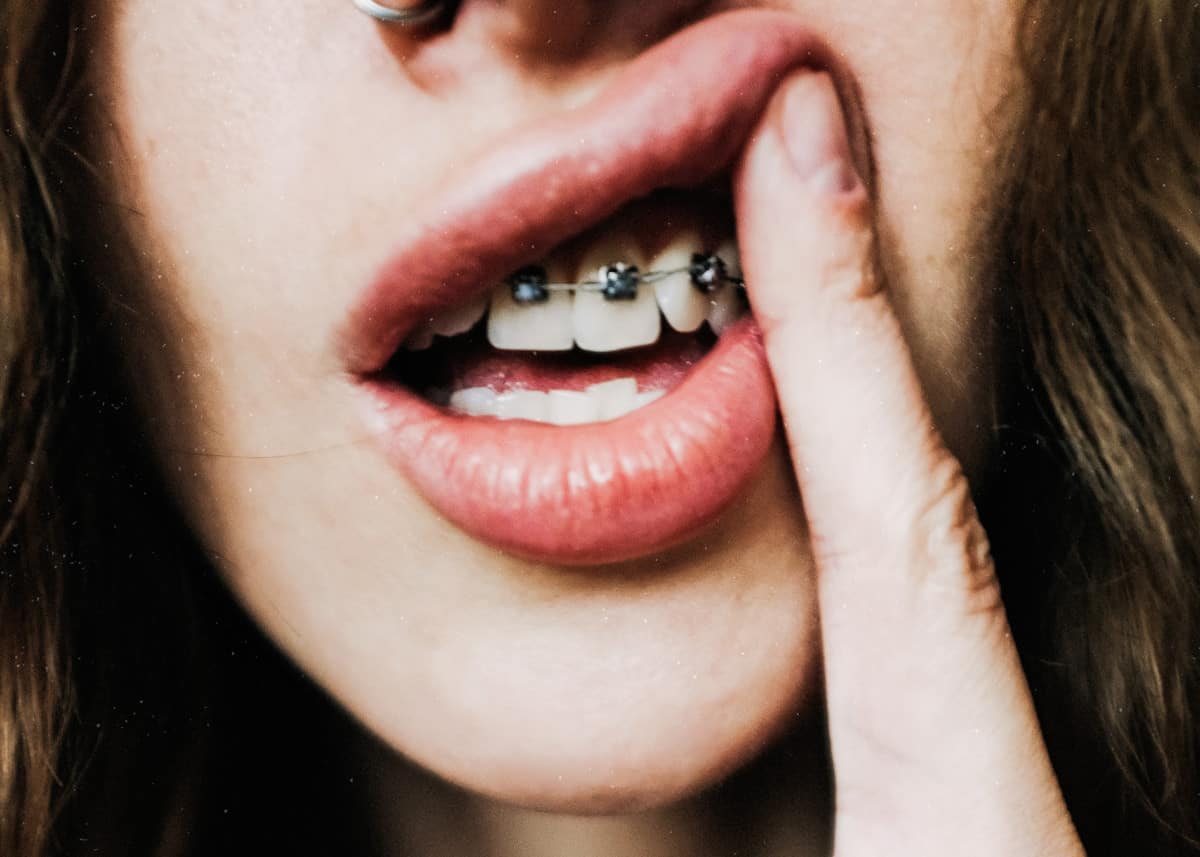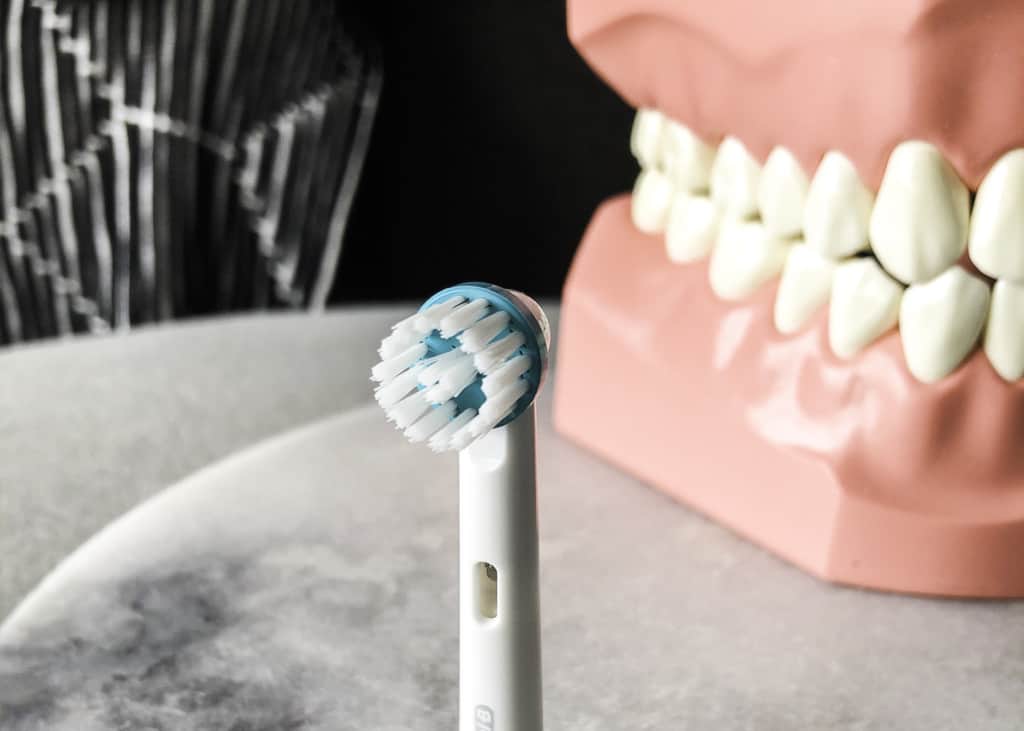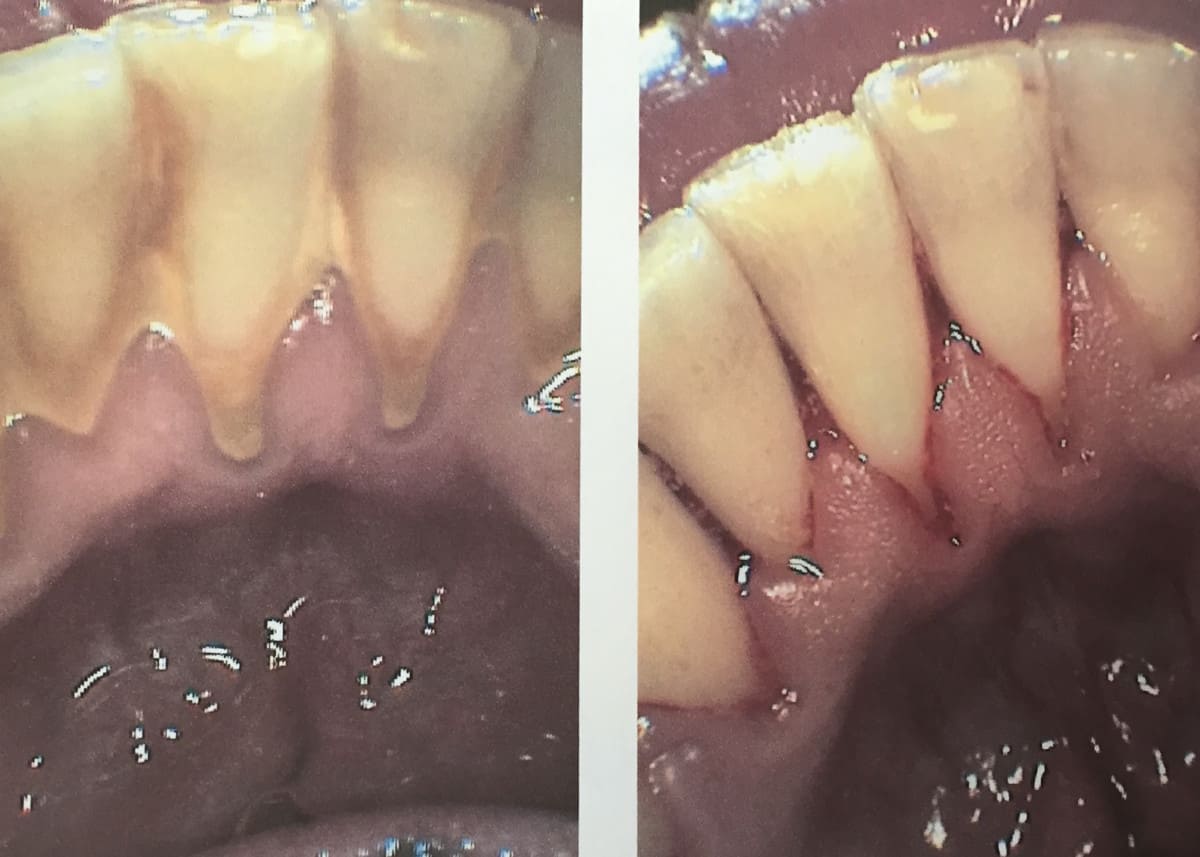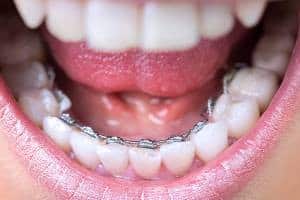
Having white teeth and a “brilliant white” smile is portrayed as the ideal, stemming from social media, celebrities and even our dental professionals! I have both patients who are going through braces and parents with children going through braces, asking me about whitening all the time and how they can make their teeth whiter with braces. My honest response to how to whiten teeth with braces?
Teeth should not be whitened while going through traditional orthodontic treatment where brackets/abutments are attached to the cheek/lip side of the teeth. Whitening with braces causes inconsistencies of tooth colour as the teeth under the cement/brackets will not whiten, leaving the tooth patchy.
There are many reasons why teeth should not be whitened while undergoing orthodontic treatment. In this post, I explain how to make your teeth appear more white while having braces, why you shouldn’t whiten with braces on and why you can’t always trust people/companies trying to sell you a product.
All of the information in this post is relevant for both Invisalign and traditional braces.
How to whiten teeth with braces; keep them clean!
The only way to whiten teeth with braces is to keep them clean! Prevention is key to keeping and maintaining a white smile during orthodontic treatment. Please don’t try any of the “whitening at home” tricks yourself, and I will explain why further down.
Orthodontics is the treatment of aligning misaligned teeth and jaws, including the use of braces.
Soft plaque on the teeth (a mixture of bacteria and food debris) can make the teeth appear yellow and reduce the smile’s brightness. As well, consuming food and drink that has pigment can cause staining. All of these things make your teeth appear less white.
Regular flossing and brushing to clear away food debris and soft, sticky plaque make the teeth appear more white. Also, it will prevent stains from accumulating from pigmented food and drink, which can be tricky to get off.
I know we dental professionals sound like a broken record going on and on about brushing and flossing, but the truth is, it’s because it works and makes so much of a difference! Not only will you be keeping your teeth nice and white but also benefit your gums and prevent gum disease!
Sometimes we need a little help from other dental tools to keep braces and the mouth healthy (I know I needed it when I had braces!). Below are the best tools you can buy to keep the mouth clean with braces, and I still use them today even though I got my braces off over 10 years ago!
A big thing for me is the ease of use, if I get annoyed using something (like string floss around braces), I simply won’t use it!
The best tools to clean your braces are;
- Interdental brushes (Amazon Link)
 , also known as Proxabrushes
, also known as Proxabrushes - Plackers for ortho (Amazon link)
 (floss picks that fit under the wire of the braces),
(floss picks that fit under the wire of the braces), - and the star of the show: an electric toothbrush with a pressure sensor (Amazon link to the brush I used for years, you don’t need the fanciest toothbrush, you need the one that is the most effective).
Interdental brushes were my favourite tools when I had braces (I had them twice) because they can clean around the brackets better than the toothbrush, and they push out stuck food that gets caught under the wires, on the teeth, and around the brackets. And I now use the ultrathin ones in between my teeth, especially around my lingual wire (permanent retainer).
Sometimes floss is too thin to really clean away some of the larger masses of food or plaque, and the floss slides easily underneath the plaque, leaving it behind. And that’s why I love the interdental brushes. They got all that leftover stuff the floss doesn’t get!
If you want a more in-depth explanation of the above items, my orthodontic resource page has it all!
has it all!
Maintaining a great oral hygiene routine and regular dental hygiene cleanings can prevent teeth from getting stained. I know I sound like I am repeating myself, but prevention is the best thing you can do to ensure the teeth maintain white.
Read Now: White Spots from Braces; Are They Permanent? (Poor oral hygiene with braces can cause white spots that eventually turn brown.)
(Poor oral hygiene with braces can cause white spots that eventually turn brown.)
Some large name brand companies have written on their website how to whiten with braces, and truthfully it’s just shameful. They have written entire posts on how to whiten your teeth with braces, but then stem off to explain how to whiten teeth…teeth without braces, not teeth that have braces on them. I think this can misguide the reader to believe whitening teeth with braces is okay.
I find that the way they are writing is not being 100% honest about what whitening your teeth with braces can actually do to your teeth, and tricking people into doing it, and using their whitening products. As you can tell… I am quite passionate about this because I don’t want anyone, including you, to cause irreversible damage to your teeth.
Using an electric toothbrush with braces can be a lifesaver because the vibrations of the brush help to dislodge food and bacteria, stimulate the gum tissue to promote healing of the gums if there is gingivitis, and not to mention the 2-minute timer that keeps us on track! Products are evolving to suit people with braces which makes me so happy!
Oral-B has brush heads that are made just for braces, as you can see in the picture below!

Brush heads for braces contour around the brackets. With some of the traditional brush heads, the bristles can be too dense to effectively get under the wires and around the brackets.
You can find them on Amazon for a reasonable price. Here is the link! Please don’t buy the generic/off-brand ones as they are not as effective and prone to breaking, so they do not vibrate as well on the teeth.
Please don’t buy the generic/off-brand ones as they are not as effective and prone to breaking, so they do not vibrate as well on the teeth.
Maintain regular dental hygiene appointments

Over time the minerals in our saliva calcify the bacteria/plaque in our mouths to the teeth. This hard calcified bacteria is calculus/tartar and is more yellow.
The calculus/tartar can also absorb pigment from our food and drink. This calcified matrix on the tooth can make the teeth look like they are stained, but they aren’t. Calculus is like cement on the teeth and cannot be removed with flossing and brushing.
If there is calculus on your teeth, you’re due for a thorough dental hygiene appointment where the calculus is professionally removed from the teeth. And sometimes, more frequent hygiene appointments are necessary.
In my practice;
I have one patient right now (a 16-year-old male) who is going through orthodontic treatment and he is not the most diligent with his home care, so his mom has him come in to see me every 3 months for dental hygiene treatment. Coming in more often has made a huge difference in the health of his teeth and gums!
Can you whiten your teeth with lingual braces?

The only time you can whiten your teeth while going through orthodontic treatment is when you have braces on the lingual surfaces (the surface of the tooth closest to the tongue).
Can you use whitening toothpaste with braces?
Whitening toothpaste should never be used while going through orthodontic treatment. Whitening toothpaste does not whiten teeth, rather, it abrades away the surface causing irreversible damage, and can create a patchy look on the teeth as the tooth surface under the brackets will be untouched.
Different kinds of whitening toothpaste have different levels of abrasiveness. The American Dental Association has a standard of measurement of abrasiveness called RDA (relative dental abrasion).
We all should use toothpaste below 150 RDA to prevent permanent loss of tooth structure. Ideally, the toothpaste that we use should be below 70 RDA, and there are a couple of whitening toothpastes that fall under 70 RDA.
However, I still don’t want my patients to use any whitening or abrasive toothpaste while going through orthodontic treatments. I discuss with my patients about whitening options after they get their braces off and how we can achieve their wants and needs for their smile post braces.
Another issue with whitening toothpaste is that they are being used on every surface of the mouth. With use, the toothpaste abrades away precious tooth surface that is irreplaceable. This is also why you shouldn’t be getting a polish every time you have a dental hygiene appointment because the polish we use is extremely abrasive!
Read Now: Why You Shouldn’t Have Your Teeth Polished at the Dentist
The best toothpaste to use that is very low in RDA is Sensodyne ProNamel ! This is the only toothpaste that I use as a dental hygienist. Why? Because it is low abrasiveness (RDA of about 37), I like the taste (not too minty), contains no SLS (sodium lauryl sulphate), and prevents acid erosion.
! This is the only toothpaste that I use as a dental hygienist. Why? Because it is low abrasiveness (RDA of about 37), I like the taste (not too minty), contains no SLS (sodium lauryl sulphate), and prevents acid erosion.
At-home whitening products and tricks to avoid
As I have previously mentioned, whitening toothpastes should be avoided to prevent abrasion of the tooth surface. But that is not the only at-home whitening product or tricks that are used by unsuspecting consumers.
Other whitening products that come into contact with the gum tissue as well will not have a noticeable effect on your teeth either. If it doesn’t whiten your gums.. it won’t whiten your teeth. This includes pens, mouth rinses, gum, and lights.
Read Now: Why Teeth Be come Yellow and Whitening Tricks That Worsen It
come Yellow and Whitening Tricks That Worsen It
Lights such as LED make such a small difference in tooth colour, according to studies, but not enough for the naked eye to see. If it were me, I would skip out on the lights because I see it as a waste, as hydrogen peroxide does all the work.
Other tricks, such as lemon and baking soda, belong at the bottom of a dumpster! No one should ever touch a piece of lemon to their teeth, as it is very acidic and will start to dissolve the teeth. But I understand why people start doing these things because they see it all over the internet without anybody properly disclosing how bad it is for the teeth.
This includes lemon water! Lemon water (and all water that has fruit in it), is acidic and can lead to tooth abrasion and cavities!
What colour braces make teeth whiter?
The colour of braces comes from the elastics/bands that are used to hold the wire to the bracket. These elastics/bands are removed and discarded when the wire is changed. That gives an opportunity to change the colour! But what colours make the teeth look more white?
Dark purple, navy blue, light blue, red, and hot pink braces bands will make teeth look more white. Dark colours make the teeth look more white because there is more contrast, and light blue and pink can make the teeth appear brighter. Black, white, gold, yellow, and clear make teeth appear less white.
There are a couple more colours you will want to stay away from.
Green elastics/bands will make your teeth look like they have food in them, and so can orange.
The other colours I mentioned above that I would stay away from and why are;
- black: can look like something is stuck in between the teeth or make it look like a cavity.
- white: it will absorb food and drink pigments and make the teeth look more yellow because of the stark whiteness compared to natural tooth colour.
- gold: has yellow tones that can bring out the yellow undertones of teeth.
- yellow: bring out yellow undertones of teeth.
- clear: same as white, clear can absorb food and drink pigments and begin to look dirty.
I had braces that didn’t use elastics, so I didn’t have the choice of different colours, and I was both happy and sad about that. Happy I didn’t have to choose and worry about my elastics becoming stained and discoloured, and sad because sometimes, on festive occasions, I was jealous of my friends who chose cool colours.
The bottom line is that please don’t whiten your teeth while undergoing orthodontic treatment.
I hope I have helped you today, and I hope after you get your braces off, you can achieve your big beautiful white smile.
Holly 🙂
